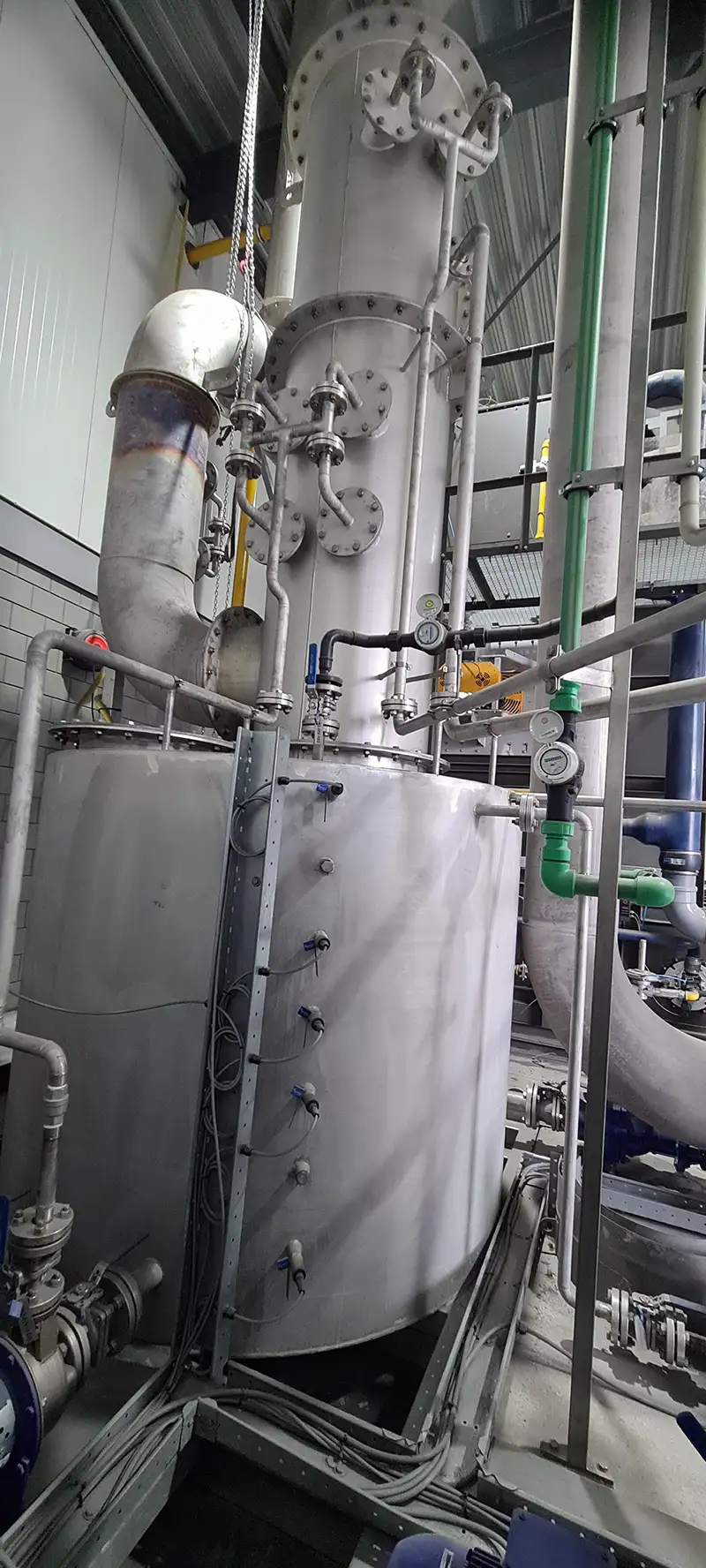Hot gas cooling and cleaning
 There are circumstances in which the contaminated gas to be absorbed is not led directly into a scrubber. In certain processes, (combustion) gases often arrive at hot temperatures, which make it necessary to manufacture the scrubber from a stainless steel or other (expensive) precious metal. A satisfactory solution for this is to place a hot temperature resistant quench in front of the scrubber so that the scrubber can be manufactured from plastic (PE, PP, GRP, etc.).
There are circumstances in which the contaminated gas to be absorbed is not led directly into a scrubber. In certain processes, (combustion) gases often arrive at hot temperatures, which make it necessary to manufacture the scrubber from a stainless steel or other (expensive) precious metal. A satisfactory solution for this is to place a hot temperature resistant quench in front of the scrubber so that the scrubber can be manufactured from plastic (PE, PP, GRP, etc.).
How Quenchers work
In quenchers, the hot waste gas is very often cooled by water evaporation before it flows into the scrubber at the right temperature. This water is atomized directly into the gas stream by spray nozzles (open spray system) to evaporate the water immediately.
Reduce hot temperatures
When quenching, the gas flow is completely saturated, and the temperature is decreased to the wet bulb temperature by means of adiabatic cooling. In other words, an immense amount of small droplets with a relatively large contact surface area are introduced into the gas stream, so that they can evaporate immediately. As a result, the heat energy is extracted from the gas, causing it to cool down massively (adiabatic cooling). If the quench is properly configured, the gas will cool down to the saturation temperature.
Quenchers prevent clogging
The efficiency of the quencher depends on the droplet size and the spray pattern as well generated by the spray nozzles and the residence time of the gas in the cooling section. Ravebo uses non-clogging nozzles (without internal swirls) and simultaneously are able to generate ultrafine droplets. This is important because a quencher often uses recirculating water which can lead to saturated liquid with solid dirt particles.
Accompanying dust particles
An additional consequence of an optimal quench is that any entrained dust particles and other contaminants in the gas are largely removed. This reduces the load on the scrubber. In addition, the gas flow is already fully saturated when entering the scrubber, which will contribute to better gas absorption. Furthermore, also corrosion effects of any chemicals in the gas flow is less at a lower temperature, which can be beneficial for the chemical resistance of the used construction materials.
We have the right solution for you, tailor-made
The quenchers are designed and built entirely in-house for any desired application. The quenchers can be supplied as a stand-alone as well as in combination with a scrubber system or even integrated into the gas intake of the scrubber. Quenchers can often be integrated into existing plants. The open spray system quencher is also characterized compared to a venturi principle with a much lower pressure loss.
